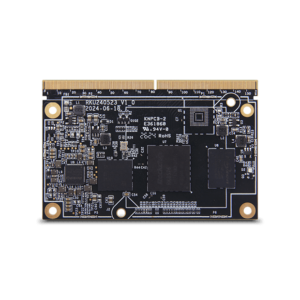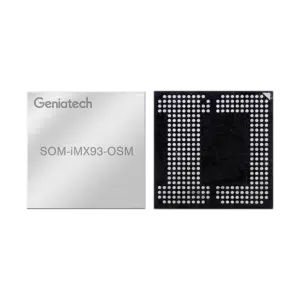How System on Module (SoM) Revolutionizes IoT Development
How System on Module (SoM) Revolutionizes IoT Development
Blog Article
The rapid development of engineering has pushed substantial improvements in stuck methods, certainly one of which is the computer on module market Working as a link between custom electronics and off-the-shelf modules, the SoM is redefining how developers strategy embedded system design. This website features the primary understanding of a Program on Module and its rising programs in various industries.

What is a Process on Module (SoM)?
A System on Module (SoM) is really a lightweight, ready-to-use board that integrates all the primary components of something on a single module. This generally contains the processor, memory, energy administration devices, and sometimes extra peripherals like Wi-Fi or Ethernet. Unlike a conventional single-board pc, an SoM does not have fittings and screen ports pre-installed, meaning it must certanly be along with a company board to make an entire system.
Made to streamline development workflows, the modular character of an SoM enables developers to skip the complex procedure for designing and assembling each individual element from scratch. By adopting an SoM, businesses can concentrate more on the application-specific characteristics of these products.
Advantages of Using Process on Module
The integration of an entire program on a singular component presents several benefits. First, it considerably decreases enough time necessary for product development. Pre-tested modules guarantee security, keeping weeks of work for executive teams.
Furthermore, the scalability of an SoM allows companies to adjust efficiency levels predicated on task requirements. As an example, a low-cost option can very quickly scale right into a high-end product by sharing the model in the element while preserving the service table design. This approach reduces design risks while marketing long-term cost-efficiency.
Finally, the consistency of an off-the-shelf module guarantees high compatibility with current resources and frameworks, rendering it suitable for equally little startups and big enterprises striving to hit the market quickly.
Key Purposes of SoM in Embedded Systems
The use of Program on Modules spans several high-demand industries including but not limited to medical products, automation, and client electronics.
Medical Products
Reliability and consistency are paramount in healthcare. Program on Segments with secure handling functions are embedded in screens, imaging devices, and portable diagnostic tools.
Commercial Automation
Effective and energy-efficient, an SoM is a must for industrial control techniques and autonomous robotics. Its scalable structure helps high-speed information processing and IoT connectivity.
IoT Devices

Consumer items like wise thermostats, wearable devices, and actually house assistants include an ultra-compact Process on Element for seamless performance.
The Process on Module remains to gain footing because of its decreased complexity and versatility, cementing itself as a future-proof answer in the embedded techniques sphere. Industry leaders happen to be leveraging these adventures, and their scope is likely to expand further as engineering evolves.
Report this page